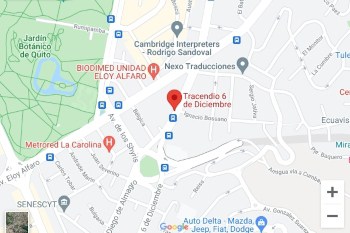Many people in Latin America are considering traveling to or relocating to Europe or the United States. These countries offer educational opportunities and employment prospects, though sometimes it’s simply a desire to explore new horizons. For most people, getting a visa for these destinations is essential. However, the processes and requirements for obtaining visas for Europe and the United States are different, as they reflect the particular policies and priorities of each region. In this article, we will explore the differences between European and American visas for individuals in Latin America, focusing on key aspects such as eligibility criteria, application processes, and the overall experience of obtaining a visa.
Eligibility Criteria
The main difference between European and American visas (for Latin Americans) lies in the eligibility criteria. Although both regions have their specific requirements, the fundamental differences are evident.
a. European Visas:
In Europe, the Schengen area plays a central role in how visa policies are applied. The Schengen Agreement allows people to travel easily between participating European countries and is a very attractive option for Latin American travelers. Generally, to apply for a Schengen visa, travelers must provide:
- Proof of the purpose (of the trip): This can be an invitation letter, hotel reservation, or itinerary with details of planned activities.
- Sufficient funds: Applicants must demonstrate that they have the financial means to cover their stay in Europe. Bank statements or sponsorships are typically used as evidence.
- Travel insurance: It is mandatory to have medical insurance that covers the entire Schengen area.
- A valid passport: The passport must have at least two blank pages and be valid for at least three months after the planned departure date.
- Proof of ties to the home country: Applicants must demonstrate their intention to return. Documents like employment letters, property ownership, or family ties are often used for this purpose.
b. American Visas:
For the American visa, eligibility criteria differ significantly. The United States offers various types of visas: tourist (B1/B2), work (H-1B, L-1), and student (F-1). The application process for each type is complex, but in general, the following is required:
- Visa application form (DS-160): This form is necessary for all types of U.S. visas and must be filled out online.
- Payment of the application fee: Applicants must pay a non-refundable fee, which varies depending on the visa category.
- Interview appointment: Most applicants for a U.S. visa must attend an interview at a U.S. embassy or consulate.
- Sufficient ties to the home country: Similar to European visas, applicants must demonstrate significant ties to their home country to ensure their intention to return.
- Affidavit of Support: For some types of visas, such as those sponsored by family or an employer, the applicant must provide an Affidavit of Support from the sponsor (Form I-864) to demonstrate that they will not become a public burden in the United States.
Application Process
The visa application process for Europe and the United States also differs significantly in terms of documentation, timelines, and procedures.
a. European Visas:
In general, to obtain a Schengen visa, you must follow these steps:
- Gather documentation: Have the necessary documents ready to meet the eligibility criteria.
- Fill out the application form: Complete the Schengen visa application form, which is usually available for download from the embassy or consulate’s website where you plan to apply.
- Schedule the visa appointment: Book an appointment at the embassy or consulate to provide biometric data and submit documents.
- Fee payment: Pay the visa fee, which can vary depending on the type and duration of the visa.
- Attend the appointment: Show up for the scheduled appointment to provide biometric data and documents.
- Wait for a response: After submitting the application, processing times vary but are usually around 15 calendar days.
b. American Visas:
The process of applying for U.S. visas can be more complex and time-consuming. The steps include:
- Fill out the online application form (DS-160): Complete the DS-160 form online and pay the visa application fee.
- Schedule an interview appointment: Most U.S. visa applicants must schedule and attend an in-person interview at a U.S. embassy or consulate. Waiting times for available interview appointments can be long.
- Attend the interview: Attend the interview with the required documentation, including the DS-160 confirmation page, passport, payment receipt, and supporting documents.
- Fingerprinting: Depending on the visa type, you may need to provide biometric information.
- Administrative processing: After the interview, some applicants may need to undergo additional security checks or administrative processing. These checks can significantly delay the visa issuance.
- Visa issuance: If approved, the U.S. visa will be stamped in your passport. Processing times can vary widely, from a few days to several months.
Overall Experience
The overall experience of obtaining a visa for Europe or the United States can be affected by factors such as fees, processing times, and the interview process.
a. European Visas:
The process of applying for a Schengen visa is generally perceived as simpler and faster compared to the American visa process. The fees for short-term Schengen visas (up to 90 days) are relatively affordable, and processing times are typically two to three weeks. Additionally, not all Schengen visa applicants are required to attend an interview, making the process less intimidating for some individuals.
b. American Visas:
Obtaining a U.S. visa can often be a more daunting experience due to numerous documentation requirements, the need for an in-person interview, and the possibility of administrative processing. Visa costs for various categories of U.S. visas can also be relatively high, and waiting times for interview appointments can be long, especially in densely populated regions. While the United States offers a wide range of visa options, the application process can be overwhelming, especially for those who are not familiar with the complexities of U.S. immigration procedures.
Given all of the above, it’s important to ensure that the documentation submitted to immigration authorities in Europe and the United States is properly translated. A travel project to Europe or the United States requires effective and accurate communication between the traveler and the destination country, so reliable translation services are essential. At Tracendio, we offer translation services for all your visa application documents, in the format and specific field of knowledge you need to obtain your visa for Europe or the United States.





Leave a Reply